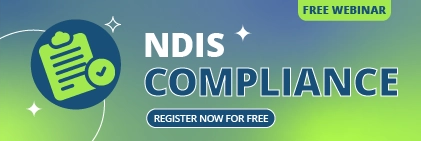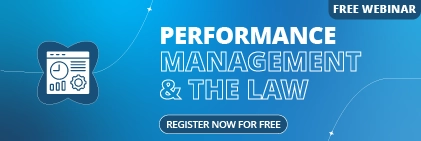Let’s be honest: managing people can feel like trying to do too many tricky things at once.
Between payroll spreadsheets, tracking employee hours, approving leave, and staying compliant with ever-changing employment laws, HR can easily become overwhelming.
That’s where modern HR tech platforms come in.
They’re designed to take the pain out of people’s management by bringing everything, from onboarding to payroll, into one place.
In fact, businesses are catching on everywhere around the world. Whether you’re running a small startup or a growing company with hundreds of employees, using a unified HR system saves hours of admin time and keeps your data accurate and secure.
In this guide, we’ll explore the best HR tech platforms that seamlessly integrate payroll, benefits, and time tracking.
What is an HR Tech Platform?
HR Tech Platform (short for Human Resources technology platform) is software that helps you manage the entire employee lifecycle – from hiring to retirement – in one place.
These platforms combine multiple tools into one system, including:
- Recruitment and onboarding
- Payroll and benefits management
- Time tracking and attendance
- Performance reviews
- Compliance and training
Instead of bouncing between spreadsheets, email chains, and separate systems, an HR platform centralises everything. That means employee data, documents, and time records live in one secure, easy-to-access hub.
The real magic happens when these platforms integrate with other systems like payroll or accounting software.
For example, when an employee’s timesheet is approved, the system can automatically update payroll and calculate wages without manual input.
That reduces errors, speeds up processing, and ensures compliance with employment laws.
8 Benefits of HR Tech Platforms
If you’ve ever spent hours untangling timesheets, chasing missing forms, or fixing payroll mistakes, you already know why HR tech matters. But beyond saving your sanity, the right HR software can completely transform how your business runs.
Here are some of the biggest benefits of using an integrated HR tech platform that brings payroll, benefits, and time tracking together.
1. Streamlined Payroll and Compliance
Payroll is one of the most critical (and stressful) parts of HR. Get it wrong, and it’s not just unhappy employees you’ll deal with – compliance issues can cause serious headaches too.
An HR platform that integrates payroll takes the manual work out of the process. It pulls approved timesheets straight into payroll, calculates pay automatically, and keeps you in line with local tax and employment laws.
No more double-entry. No more late payments. Just smooth, accurate payroll every time.
2. Centralised Employee Data
Remember the days when you had to dig through filing cabinets or endless folders to find an employee record? Those days are gone.
An integrated HR system acts as a single source of truth for all your employee data – from job history and contracts to benefits and performance notes. This centralisation makes it easier to update records, generate reports, and share accurate information across departments.
You’ll always know where everything is, and your team will thank you for it.
3. Improved Accuracy and Fewer Errors
Manual HR processes are magnets for mistakes – especially when juggling multiple systems.
With an automated HR tech platform, data flows seamlessly between modules, dramatically reducing errors in payroll, time tracking, and benefits management.
Even small errors, like entering the wrong tax rate or missing an absence, can have big consequences. Automation ensures consistency and accuracy every time.
4. Enhanced Employee Self-Service
Modern HR systems aren’t just for managers – they empower employees too.
With built-in self-service portals, your staff can update personal details, log time, request leave, or download payslips without HR intervention. That means fewer admin interruptions for you and a smoother experience for your team.
It’s a win-win: employees get independence, and you get your time back.
5. Scalability for Growing Businesses
As your business grows, so do your HR needs. The beauty of a well-designed HR tech platform is its ability to scale with you.
Whether you’re adding ten new hires or expanding internationally, you can easily manage more employees, departments, and compliance requirements – all within the same system.
This flexibility saves you from outgrowing your software every few years.
6. Smarter Reporting and Analytics
Numbers don’t lie, and when it comes to people management, they tell you everything from attendance trends to turnover rates.
HR tech platforms come with reporting dashboards and analytics tools that turn raw data into insights. You can identify patterns, predict workforce needs, and make data-driven decisions instead of relying on gut feeling.
Want to know your most productive department or your average overtime hours? You’ll have those answers in seconds.
7. Better Employee Experience and Retention
When HR processes run smoothly, employees notice.
They get paid accurately, see transparency in their benefits, and feel supported by a system that works.
A good HR platform improves communication, reduces frustration, and helps foster a culture of trust and efficiency. Happier employees are more likely to stay – and that’s great news for retention and morale.
8. Seamless Integration with Other Business Systems
Finally, the cherry on top – integration. A strong HR platform connects effortlessly with your other tools, such as payroll, accounting, and even learning management systems.
That means everything from financial reporting to compliance tracking happens automatically behind the scenes.
Integration saves hours of manual effort each week and keeps every part of your business aligned.
Best HR Tech Platforms with Payroll and Time Tracking Systems
When it comes to choosing the right HR tech platform, there’s no shortage of options – but not all systems are created equal. You need something that fits your team size, integrates smoothly with your payroll and benefits, and is easy enough for everyone to use.
Below, we’ve rounded up ten of the best HR tech platforms that combine payroll, benefits, and time tracking into one efficient solution.
1 – Sentrient
If compliance, simplicity, and automation are high on your list, Sentrient is a top contender.
Designed for businesses of all sizes, it’s an all-in-one workforce management system that takes the stress out of HR, payroll, and time tracking.
Sentrient is particularly strong in compliance and policy management – a lifesaver for businesses that need to stay on top of workplace legislation. But it’s not all about red tape; it’s also about convenience.
Everything from onboarding to timesheets to payroll is connected, making HR feel effortless.
The platform is cloud-based, intuitive, and scalable, meaning you can manage your workforce from anywhere – perfect for hybrid and remote teams.
Key Features
- All-in-one HR, compliance, and payroll integration
- Automated onboarding and employee records
- Real-time time tracking and attendance
- Policy management and compliance eLearning
- Centralised dashboards and reporting tools
Pros
- Simple to use, even for non-HR staff
- Excellent compliance and training features
- Strong customer support and setup guidance
- Scales easily as your team grows
Cons
- Fewer advanced analytics compared to enterprise tools
- Customisation can be limited for complex global teams
2 – Employment Hero
If you’re after an HR platform that does it all, from payroll and benefits to employee engagement, Employment Hero is worth your attention.
It’s especially popular among small and medium-sized businesses looking for automation and flexibility.
The platform brings HR, payroll, and performance together in one easy-to-navigate system. Employees can manage their own details, access payslips, and apply for leave through a mobile app – perfect for teams on the go.
It also integrates beautifully with tools like Xero and MYOB, which is ideal if you already use those for accounting.
Key Features
- Integrated payroll and benefits management
- Employee self-service via mobile app
- Automated onboarding and compliance
- Performance reviews and learning tools
- Integration with accounting software
Pros
- Great for hybrid and remote workforces
- Strong automation and compliance features
- Simple, clean interface
Cons
- Costs can increase as you add more features
- Some advanced reporting features are locked behind higher tiers
3 – BrightHR
If simplicity is your thing, BrightHR is a fantastic choice. It’s designed for small to medium businesses that want to ditch paperwork and bring everything online without a steep learning curve.
BrightHR focuses on practical tools, including absence management, time tracking, and employee scheduling, all wrapped in a user-friendly interface. While its payroll capabilities are handled via integration, the process is seamless and intuitive.
Its mobile app is another highlight, letting employees clock in, check shifts, and submit requests right from their phones.
Key Features
- Absence and leave management
- Shift scheduling and rota planning
- Payroll integration with top providers
- HR document storage and templates
- Mobile app for managers and employees
Pros
- Very easy to use and navigate
- Great mobile experience
- Excellent customer service
Cons
- Lacks built-in payroll functionality
- Limited in-depth reporting tools
4 – BambooHR
BambooHR has become a household name in HR tech – and for good reason.
It’s one of the most user-friendly platforms for managing people, data, and performance, all in one sleek system.
While it’s primarily known for its HR and people management tools, BambooHR also offers integrated payroll (through TRAXPayroll), time tracking, and benefits administration.
It’s a great fit for small and medium-sized companies that want a professional-grade solution without the enterprise-level complexity.
Key Features
- Payroll and time-tracking integration
- Employee database and records management
- Customisable reports and analytics
- Performance management tools
- Mobile app access
Pros
- Clean, intuitive interface
- Strong customer support and onboarding
- Excellent performance management tools
Cons
- Built-in payroll is only available in some regions
- Pricing available on request, not public
5 – Workday
When it comes to enterprise HR software, Workday is one of the biggest names out there.
It’s a robust, cloud-based platform that combines HR, payroll, finance, and analytics in one integrated suite – ideal for larger organisations.
Workday shines when it comes to data and insights. Its powerful reporting tools give you real-time visibility into your workforce, helping you plan, forecast, and manage people strategically.
The system’s payroll and time tracking modules are tightly linked, ensuring every worked hour is accounted for and every payslip is accurate.
Key Features
- Built-in payroll for multiple countries
- Workforce planning and analytics
- Time tracking and scheduling
- Performance and learning management
- Data security and compliance tools
Pros
- Unmatched analytics and data insights
- Extremely reliable and scalable
- Designed for complex organisations
Cons
- Expensive compared to smaller systems
- Requires training to fully master
6 – ADP Workforce Now
If you’ve been anywhere near the HR world, you’ve probably heard of ADP.
It’s one of the longest-standing and most trusted names in payroll and HR software, and its Workforce Now platform brings all that expertise together in one place.
Designed for medium to large businesses, ADP Workforce Now covers everything from payroll and time tracking to benefits, talent management, and compliance. It’s robust, reliable, and scalable – ideal for companies with complex HR needs.
It’s particularly powerful when it comes to payroll automation and regulatory compliance, helping you stay up to date with local employment laws.
Key Features
- Full-service payroll management
- Time and attendance tracking
- Benefits administration and enrolment tools
- Advanced analytics and HR dashboards
- Employee self-service portal
Pros
- Exceptional compliance support and accuracy
- Integrates easily with other business systems
- Strong analytics and reporting capabilities
Cons
- Interface can feel a little dated
- Add-on costs can increase overall pricing
7 – Sage HR
Formerly known as CakeHR, Sage HR is a lightweight, flexible solution that’s perfect for small and medium-sized businesses.
It’s part of the Sage ecosystem, so if you already use Sage accounting software, integration is seamless.
Sage HR keeps things simple without skimping on essential features. It handles time-off requests, shift scheduling, performance tracking, and even payroll add-ons – all wrapped in a clean, intuitive design.
The platform’s modular approach is particularly handy, allowing you to start small and add more features as your business grows.
Key Features
- Core HR, time-off, and shift scheduling
- Optional payroll integrations
- Performance management and goal tracking
- Employee self-service
- Mobile app for real-time access
Pros
- Simple to set up and use
- Affordable and scalable for small teams
- Integrates smoothly with Sage accounting tools
Cons
- Limited analytics and reporting features
- Some integrations require manual setup
8 – Rippling
If automation and integration are what you crave, Rippling is a serious powerhouse. It’s an all-in-one platform that combines HR, payroll, IT, and benefits, providing a single location to manage both your people and their technology.
Rippling automatically syncs employee data across all systems. When someone joins your company, it can onboard them, assign devices, set permissions, and handle payroll – all in just a few clicks.
This level of automation makes Rippling a favourite among tech-savvy businesses and startups that want to save time and reduce admin work.
Key Features
- HR, payroll, and IT management in one platform
- Automatic onboarding and offboarding
- Benefits and time tracking integration
- Global HR compliance management
- Device management (unique feature)
Pros
- Incredibly efficient and time-saving
- Excellent for growing or remote teams
- Great user experience
Cons
- Pricing can be a bit complex
- Customisation may require technical setup
9 – Workable
Workable is best known as a recruitment platform, but it has evolved into a more complete HR solution with strong integration capabilities.
If hiring top talent is a major focus for your business, this one’s worth considering.
It’s perfect for companies that want to manage the full hiring journey from job posting and candidate tracking to onboarding and HR system integration. Workable connects with payroll and time tracking tools, making transitions from candidate to employee seamless.
Key Features
- Advanced applicant tracking system (ATS)
- HR and payroll integration options
- Interview scheduling and collaboration tools
- Reporting and analytics
- Branded careers page creation
Pros
- Fantastic for recruitment-heavy businesses
- Very user-friendly
- Fast to implement and integrate
Cons
- Limited native HR functions beyond hiring
- Payroll features rely on integrations
10 – Factorial
Rounding off our list is Factorial, a rising star in the HR tech world.
This platform is designed for small and medium businesses that want big-company features without the big-company price tag.
Factorial offers a smart, modern interface and covers the key pillars of HR like payroll, time tracking, benefits, and performance.
It’s ideal if you want an all-rounder that’s easy to learn, simple to implement, and pleasant to use day to day.
Key Features
- Payroll and benefits management
- Time tracking and scheduling tools
- Document management and e-signatures
- Performance and leave management
- Customisable workflows
Pros
- Great value for money
- Intuitive, visually appealing design
- Fast setup with good support
Cons
- Reporting tools are a bit basic
- Some integrations are still expanding
How to Choose the Right HR Tech Platform for Your Business
After seeing how many fantastic HR tech platforms are out there, you might be wondering: how do you pick the right one?
With so many shiny dashboards and clever automation tools, it’s easy to feel overwhelmed.
Don’t worry, finding the perfect fit doesn’t have to be complicated.
Here’s how to narrow down your options and make a confident decision.
1. Define Your Business Needs First
Before diving into demos or comparing features, take a step back and think about what your business truly needs.
Are you struggling most with payroll accuracy? Compliance? Or maybe managing remote teams?
Knowing your biggest challenges helps you identify which HR software features will bring the most value.
For instance, if compliance is your weak spot, something like Sentrient might be ideal. If hiring and onboarding are your focus, Workable could be a better match.
Make a list of your “must-haves” and “nice-to-haves” – it’ll save you time and keep you focused on what really matters.
2. Consider Integration with Existing Systems
You don’t want your HR software to work in isolation. The best platforms integrate seamlessly with your current systems, such as payroll providers, accounting software, and communication tools.
Integration is what keeps your business running smoothly. When timesheets, payroll, and performance data automatically talk to each other, you reduce double handling, eliminate data errors, and speed up workflows.
So, when evaluating a platform, always ask:
- Does it connect with our current payroll provider?
- Can it integrate with our accounting system (like Xero or QuickBooks)?
- Is there an API or open integration options for future use?
If the answer is “yes” to all three, you’re on the right track.
3. Think About Compliance and Data Security
HR platforms store sensitive information, from salaries and contracts to personal data.
You’ll want a system that takes data security seriously and complies with local privacy laws (like the Privacy Act).
Look for features such as:
- Data encryption
- Secure cloud hosting
- Regular software updates
- Built-in compliance training and tracking
Platforms like Sentrient and ADP Workforce Now are especially strong in this area.
4. Test the User Experience
Even the most feature-packed platform isn’t worth much if it’s a pain to use.
Your HR software should feel intuitive, easy enough for employees to log in, update details, or request leave without needing a manual.
During your research, book demos or request free trials. Involve your HR team and a few employees in testing.
Ask questions like:
- Is the dashboard clear and easy to navigate?
- Can tasks be completed quickly?
- Is there a good mobile experience?
The goal is to find a system that works for everyone, not just the HR department.
5. Check Scalability and Support
Your business won’t stay the same size forever, so your HR platform shouldn’t either. Make sure the system you choose can grow with you.
Can it handle more employees, new departments, or even multiple locations? And if things go wrong, will you have access to reliable support?
Great platforms don’t just give you software. They give you peace of mind.
Therefore, you should look for vendors with strong onboarding assistance, live chat support, and ongoing product updates.
6. Compare Pricing and Transparency
Finally, let’s talk money. Pricing models vary widely across HR software providers. Some charge per user, others per feature.
Don’t just compare the headline price; look at the total cost of ownership, including setup, training, and integrations.
It’s also worth checking for scalability in pricing. Can you start small and add modules later?
Transparent pricing saves surprises down the line.
Final Thoughts
By now, you’ve seen just how powerful HR tech can be when everything works together.
This includes payroll, benefits, time tracking, and compliance, all living harmoniously under one digital roof.
The best platforms aren’t just tools; they’re partners that help you save time, reduce stress, and keep your people happy.
But if you’re after a solution that blends simplicity, compliance, and all-round functionality, Sentrient truly stands out.
Sentrient’s All-in-One Workforce Management System is built to make HR effortless. It connects your HR, payroll, compliance training, and time tracking in one secure, easy-to-use platform.
No more switching between systems or worrying about manual errors; everything syncs automatically.
If you’re ready to simplify your HR processes and see what truly integrated workforce management looks like, why not take it for a spin?
Book a demo with Sentrient today and discover how effortless managing your team can really be.
FAQs
1. What is the best HR tech platform overall?
The best platform depends on your company’s size, goals, and budget. Some excel at payroll, others at analytics or compliance. It’s best to choose one that fits your team’s specific needs.
2. Which HR software integrates best with payroll systems?
Many HR platforms now offer seamless payroll integration. Sentrient, for example, makes it simple by connecting payroll, time tracking, and HR records in one place for total accuracy.
3. How much do HR tech platforms cost?
Costs vary widely – most charges per employee per month. Smaller businesses can expect lower fees, while enterprise solutions come with more advanced pricing.
4. What features should small businesses prioritise?
Start with the essentials: payroll, time tracking, employee records, and compliance. As your business grows, you can add performance, learning, and engagement tools.
5. Are cloud-based HR platforms secure?
Yes. Reputable providers use strong encryption and comply with data protection laws. Sentrient takes this further with built-in compliance and secure cloud hosting.
6. Can HR platforms integrate with accounting tools like Xero or QuickBooks?
Yes – most modern systems integrate smoothly with popular accounting software, ensuring your HR and finance data stay perfectly in sync.
7. How do I migrate from my old HR system to a new one?
The process is usually straightforward. Providers like Sentrient offer onboarding support and data migration tools to make the switch quick and stress-free.





